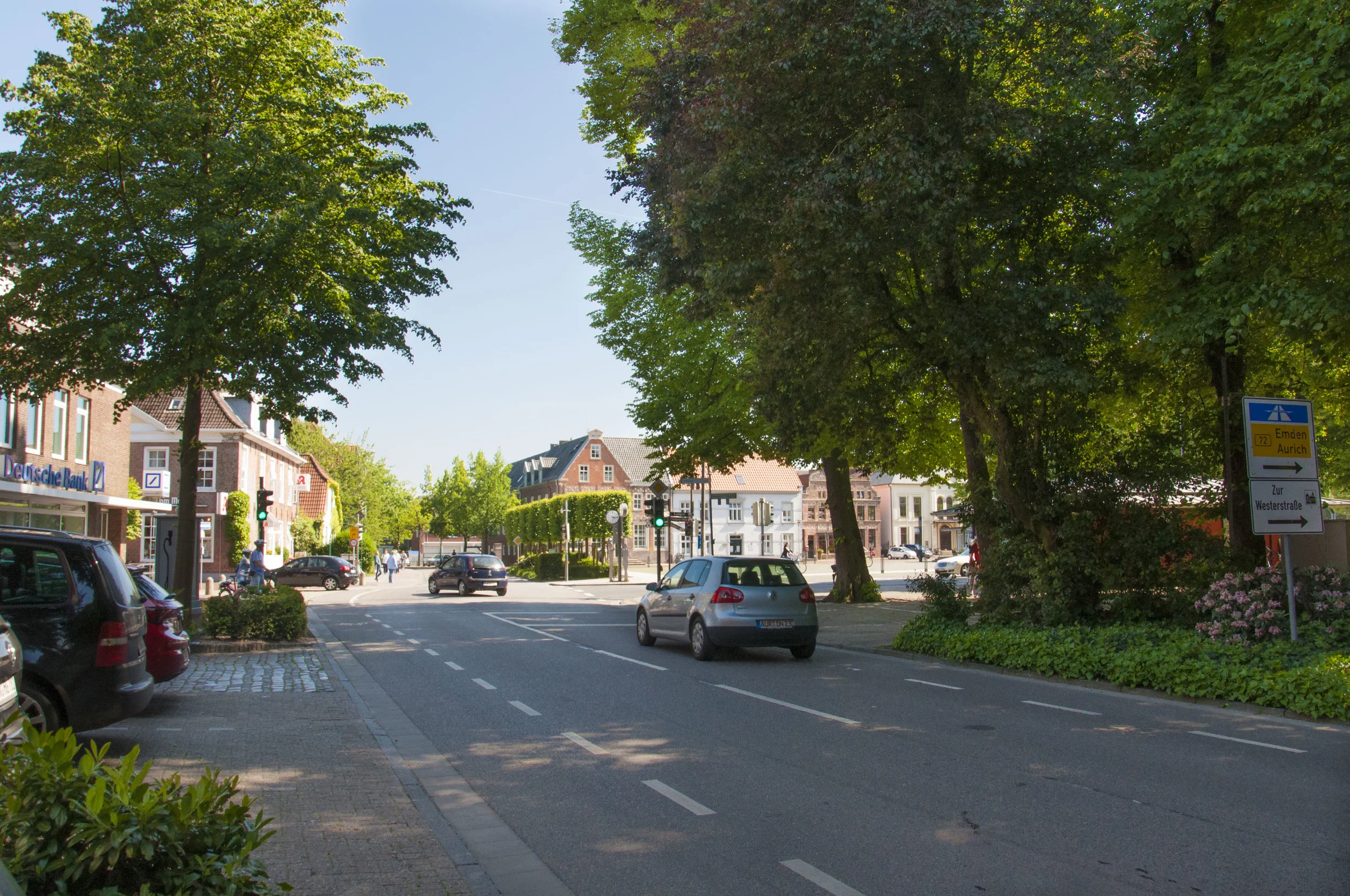Day 10: Norden and the famous Schnitger organ
by Jennifer Hsiao
We woke up early today ready for a five hour drive from Leipzig to Norden, where we would be spending the next couple of nights. Brandon, Noel, and I were in a car while Chris, Laura, Kade, Andrew, Gianmarco, and David were in the other car. Our car only stopped briefly once during the drive for a lunch of bratwurst and schnitzel, so we beat Chris et al. to Norden by a good hour! They had attempted (and failed) to find a small village with a waterfall along the highway for lunch, and as a result they were delayed... Meanwhile, we walked around the charming seaside town in the far north of Germany and ate some pastries and ice cream. We could smell the fresh air off the water and quickly understood why Norden is a vacation destination for many Germans.
In the evening, we met with Thiemo Janssen, our wonderful host in Norden. Thiemo is organist at the Ludgerikirche, where a famous North German organ by Arp Schnitger is housed. This organ was completed in 1688 and it is particularly unique due to the positioning of the different divisions of pipes (e.g. the pedal tower is around the corner from the rest of the pipes); the balance of the pipes therefore sounds quite different from varying parts of the church. Thus, for any registration, you can get three distinctly different perspectives of the sound depending on if you are in the choir, nave, or transept of the church. Just one flute stop is enough to fill up the choir area of the church, but that same stop can sound very quiet in other parts of the church. We walked around the church while Thiemo played and experienced this effect for ourselves. It also made us wonder how you register a piece if the balance of the pipes heard by the audience can be so drastically different depending on where they are sitting in the church.
A unique feature of this organ is that there is only one pedal tower (usually there are two). The loudest stop of the organ is a mixture with eight ranks in this pedal division. The Oberwerk and Brustwerk are operated from the same manual on the console and you can control which one you play using ventil stops that provide air to the pipes in either division. This system came about because Schnitger added the Oberwerk several years after the organ was initially completed. There is minimal coupling on the organ, such that the divisions remain distinct in terms of both their sound and on which manual they are played with. The only coupling that can be done on the organ is from the 3rd manual (Brustwerk or Oberwerk) to the 2nd manual (Hauptwerk).
There are thirteen original stops by Schnitger, eight stops that Schnitger reused from an earlier organ, and twenty-five reconstructed stops. There are no original principal stops left on the organ because the pipes were melted down to make bullets and cannons to be used in war in 1917. The pitch of the organ is at A ~ 473 Hz, which is very high (by way of comparison, standard tuning these days is usually A ~ 440 Hz); Thiemo told us that when playing with singers, songs often need to be transposed down in order for them to be within a comfortable vocal range. The tuning of the organ is somewhere between meantone and well-tempered tuning, and major thirds sound very pure on this organ. There are short octaves in both the Rückpositiv and Pedal divisions.
After Thiemo demonstrated the organ to us, he gave us a masterclass. David played Buxtehude’s Passacaglia in D Minor and Thiemo made some suggestions on articulation and registration for this organ. Andrew played Buxtehude’s Praeludium in D Major. We talked about how due to the tuning of the organ, it might actually be better to play this piece in C Major rather than D Major. Thiemo also discussed ways to approach touch on this organ and how to play the beginning of the piece with a more improvisatory approach.
David playing Buxtehude on the Schnitger organ during a masterclass with Thiemo Janssen
We went to Gitti’s Grill for dinner, where we ate hamburgers, frikadellers, and mixed grill meat. Gianmarco had an amusing exchange with our server when he ordered a chicken burger; he ended up being served a cheeseburger instead. He then returned to the counter to emphatically order a "Hänchenburger," enthusiastically emphasizing Hänchen--the German word for chicken.
After dinner, we were excited to go back and play the Schnitger organ. Thiemo had left the keys to the church to us, so we could literally play on the organ all night. We took turns exploring the beautiful sounds of the organ and playing around with different registrations for our pieces. We listened to how different registrations sounded downstairs and gave each other feedback. Toward the end of the evening, a few of us went downstairs where there was a kid’s table in the church outfitted with paper and colored pencils and drew while we listened to the organ. Noel made an impressive drawing of a sheep playing an organ. We had joked at Weingarten that the Vox Humana pipes, which attempt to sound like a human voice, really sound like a choking, squawking duck. In his illustration, the sheep chokes the duck in order to create the sound of a vox humana.
David playing Buxtehude on the Schnitger organ during a masterclass with Thiemo Janssen
We went home close to midnight, feeling lucky to have had such a marvelous instrument to ourselves all night for as long as we wanted. If it hadn’t been for the early start of our next day, which would include visits to 5 historic organs, we would have stayed for even longer.




















































